Believe it or not, the concept of heat is really a bit tricky. What we call heat in common language, is really not what heat is as far as physics goes. Heat, in a way, doesn’t exist. Nothing has heat. Things can have a temperature. They can have a thermal energy but they can’t have heat. Heat is really the transfer of thermal energy. Or, in other words, the movement of thermal energy from one object to another. Confused yet? Let's get started with this video:
Select a Lesson
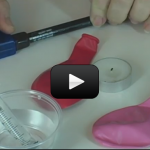 | Fire-Water Balloon If you’ve ever had a shot, you know how cold your arm feels when the nurse swipes it with a pad of alcohol. What happened there? Well, alcohol is a liquid with a fairly low boiling point. In other words, it goes from liquid to gas at a fairly low temperature. The heat from your … |
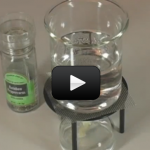 | Convection Currents Every time I’m served a hot bowl of soup or a cup of coffee with cream I love to sit and watch the convection currents. You may look a little silly staring at your soup but give it a try sometime! Convection is a little more difficult to understand than conduction. Heat is transferred by … |
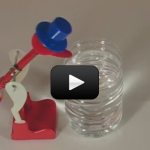 | Solar Drinking Bird The Drinking Bird is a classic science toy that dips its head up and down into a glass of water. It’s filled with a liquid called methylene chloride, and the head is covered with red felt that gets wet when it drinks. But how does it work? Is it perpetual motion? Let’s take a look … |
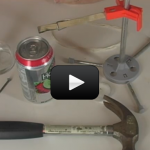 | Hero Engine There are lots of different kids of heat engines, from stirling engines to big jet turbines to the engine in your car. They all use clever ways to convert a temperature difference into motion. Remember that the molecules in steam move around a lot faster than in an ice cube. So when we stick hot … |
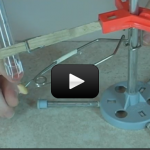 | Peanut Energy This experiment is for advanced students. Did you know that eating a single peanut will power your brain for 30 minutes? The energy in a peanut also produces a large amount of energy when burned in a flame, which can be used to boil water and measure energy. Peanuts are part of the bean family, … |
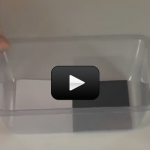 | Soaking Up Rays Heat is transferred by radiation through electromagnetic waves. Remember, when we talked about waves and energy? Well, heat can be transferred by electromagnetic waves. Energy is vibrating particles that can move by waves over distances right? Well, if those vibrating particles hit something and cause those particles to vibrate (causing them to move faster/increasing their … |
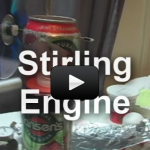 | Stirling Engine This project is for advanced students.This Stirling Engine project is a very advanced project that requires skill, patience, and troubleshooting persistence in order to work right. Find yourself a seasoned Do-It-Yourself type of adult (someone who loves to fix things or tinker in the garage) before you start working on this project, or you’ll go … |
